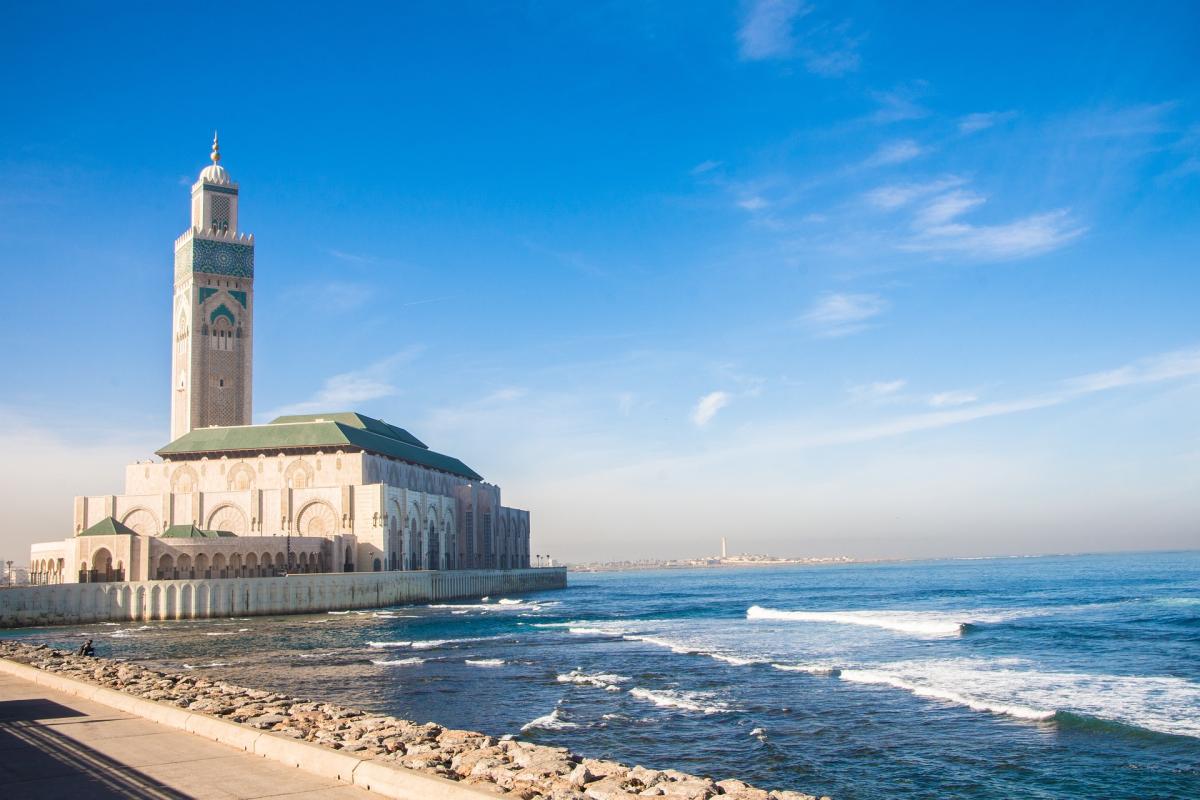
The Ultimate Morocco Travel Guide: How to Plan Your Trip to the Imperial Cities, Atlas Mountains, and Sahara Desert
Morocco is a country of dazzling diversity, a place where the senses are awakened by the scent of spices in a bustling souk, the sight of the sun setting over the vast Sahara, the taste of sweet mint tea, and the ancient call to prayer echoing through a labyrinthine medina. It is a destination that offers not just a vacation, but a profound cultural immersion. A journey here is a journey through time, from UNESCO-recognized imperial cities to the timeless traditions of the Berber people. This guide provides the essential knowledge for travelers to navigate the complexities of Morocco, ensuring a journey that is both well-prepared and deeply rewarding, built on an understanding of its history, culture, and the warm hospitality of its people.
Before You Go: Essential Morocco Travel Planning
A successful trip to Morocco begins with thorough preparation. Addressing pre-departure considerations, from the optimal time to visit to entry requirements and health precautions, provides the foundation for a seamless and enriching experience.
When to Visit Morocco: Navigating the Seasons
The timing of a visit to Morocco significantly influences the experience, as the country's diverse geography creates distinct regional climates. While there is no single perfect time to see everything, understanding the seasonal variations allows travelers to align their itinerary with their priorities.
The most favorable periods for a comprehensive tour are spring (mid-March to May) and fall (September to October). During these months, the weather is generally warm and pleasant, avoiding the extreme heat of summer and the cold of winter.
Spring (March-May): This popular season sees the landscape come alive with blooming flowers. Temperatures are favorable for touring, ranging from approximately 10°C to 35°C (50°F to 95°F) across different regions, though spring showers are common. The pleasant weather makes it an ideal time for both city exploration and mountain trekking.
Summer (June-August): These are the hottest months, particularly in inland cities like Marrakech and the Sahara Desert, where temperatures can become scorching. However, the Atlantic coast, including cities like Essaouira and Tangier, remains relatively cool and breezy, offering a popular escape from the heat. For those traveling during this period, sightseeing in the cities is best reserved for the early mornings and late evenings.
Fall (September-October): The intense summer heat subsides, ushering in another ideal season for travel. Cities welcome gentle breezes, the Atlantic beaches are less crowded, and the Sahara once again becomes pleasant for exploration. October is a particularly sought-after month, as it coincides with the date harvest season in the desert oases, rendering the valleys exceptionally lush and vibrant.
Winter (November-February): This season is excellent for exploring the imperial cities, which enjoy cool, sunny days, although nights can be cold. In the High Atlas Mountains, snow blankets the peaks, creating spectacular panoramas but making high-altitude trekking more dangerous and challenging. Coastal areas can be mild but may experience wind and rain.
The decision of when to travel often involves a trade-off. A trip in May offers perfect conditions for hiking in the Atlas Mountains but might coincide with rising temperatures in Marrakech. A visit in July is ideal for the coast but makes a desert excursion extremely challenging. Therefore, travelers must prioritize their interests. A journey focused on imperial cities and culture is well-suited for the shoulder seasons or winter, while a trip centered on coastal relaxation is best in summer. This strategic choice is fundamental to planning a satisfying itinerary.
| Season | Imperial Cities (Marrakech, Fes) | Atlas Mountains | Coast (Essaouira) | Sahara Desert |
| Spring (Mar-May) | Pleasant, warm. Ideal for sightseeing. | Lush, wildflowers. Excellent for trekking. | Mild, sunny. Good for all activities. | Warm days, cool nights. Perfect for tours. |
| Summer (Jun-Aug) | Very hot. Explore early/late. | Hot, but cooler than cities. Good for short hikes. | Warm, breezy. Peak beach season. | Extremely hot. Tours are challenging. |
| Fall (Sep-Oct) | Pleasant, warm. Ideal for sightseeing. | Clear skies. Excellent for trekking. | Mild, sunny. Good for all activities. | Warm days, cool nights. Perfect for tours. |
| Winter (Nov-Feb) | Cool, sunny days; cold nights. | Cold, snow on peaks. Scenic but challenging trekking. | Mild, can be windy/rainy. | Mild days, very cold nights. |
Festivals and Cultural Events
Timing a visit to coincide with a Moroccan festival offers a unique window into the country's vibrant culture, but it requires careful planning.
In May and June, the Gnaoua and World Sacred Music Festivals take place in Essaouira and Fes, respectively. These events celebrate Morocco's rich musical heritage, from historical Gnaoua rhythms to spiritual performances promoting tolerance.
During the winter, Marrakech hosts the International Film Festival, a major event celebrating global cinema.
Religious observances also shape the cultural calendar. Ramadan, the Islamic month of fasting, can be a fascinating time to visit, with the breaking of the fast each evening creating an electric atmosphere. However, it can disrupt daily routines, as many restaurants and shops have reduced hours.
Eid al-Adha, the "Feast of Sacrifice," is another significant event, marked by family gatherings and nationwide closures.
While these festivals provide unparalleled cultural immersion, they also bring logistical challenges. Travelers should anticipate larger crowds, higher prices for accommodation and transport, and potential closures of services. Planning a trip around a festival is a commitment to a more intense and less predictable, yet potentially more rewarding, travel experience.
Visas, Passports, and Entry Requirements
For most international visitors, including citizens of the United States, the United Kingdom, and the European Union, entry into Morocco for tourism is straightforward.
Passport: A passport valid for at least six months from the date of entry is mandatory. It must also contain at least one blank page for the entry stamp.
Visa: A tourist visa is not required for stays of up to 90 days for many nationalities. It is advisable to verify the most current visa information with the Embassy of the Kingdom of Morocco before traveling.
Overstaying: Remaining in Morocco beyond the 90-day limit without an extension is a serious matter. It requires an appearance before a judge prior to departure and may result in a fine. This process can cause significant delays.
Currency: The export of Moroccan Dirhams (MAD) is prohibited. Travelers must declare any amount of foreign currency exceeding the equivalent of 100,000 dirhams (approximately $10,000 USD) upon entry.
Health, Vaccinations, and Safety
Staying healthy and safe is paramount. This involves both medical preparations and on-the-ground awareness.
Vaccinations: The CDC and WHO recommend several vaccinations for travelers to Morocco. These include routine immunizations as well as shots for typhoid, hepatitis A, and rabies. Rabies is a notable risk in Morocco, so vaccination is particularly recommended for those who may come into contact with animals.
Health Precautions: To prevent foodborne illnesses, it is crucial to avoid drinking untreated tap water. Travelers should also take precautions against insect bites, as diseases like Leishmaniasis, transmitted by sandflies, are present in some areas.
Safety and Security: The U.S. Department of State advises travelers to "Exercise increased caution in Morocco due to terrorism," noting that terrorist groups may plot attacks on tourist locations with little or no warning. While the likelihood of such an event is low, the potential impact is high, making preparedness essential. Recommended precautions include staying alert in crowded tourist areas, avoiding demonstrations, enrolling in a program like the Smart Traveler Enrollment Program (STEP) for embassy alerts, and purchasing comprehensive travel insurance.
It is important for travelers to balance these official advisories with the on-the-ground reality. The vast majority of visitors experience a safe and welcoming country where the primary concerns are not terrorism but rather petty crime and tourist scams. This means that while travelers should be prepared for major emergencies, their day-to-day vigilance should focus on navigating the more common challenges of busy markets and street interactions.
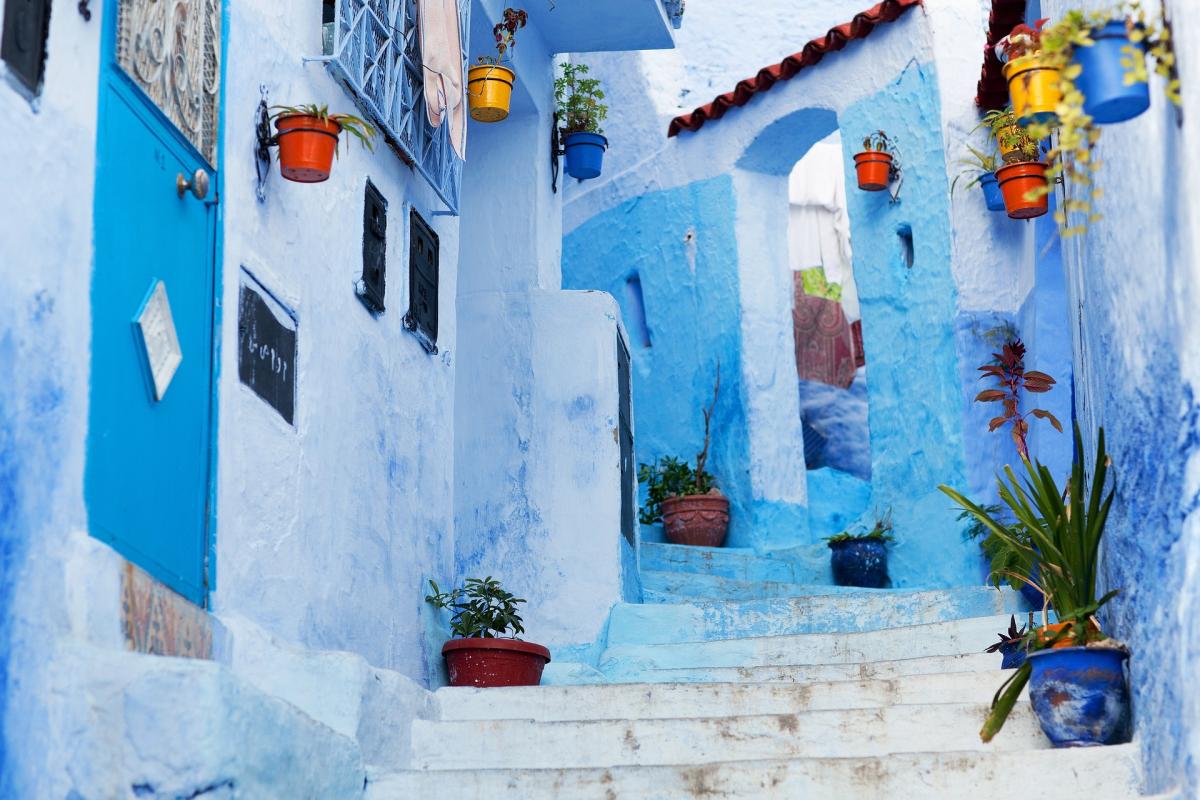
Navigating Morocco: A Guide to Getting Around
Morocco's transportation system is a reflection of the country itself-a blend of modern efficiency and traditional methods. The choice of transport profoundly shapes the travel experience, dictating the pace, cost, and level of immersion in local life.
By Train: The national rail service, ONCF, operates one of Africa's most modern train networks, efficiently connecting the major cities along the Atlantic coast and into the interior, such as Tangier, Rabat, Casablanca, Marrakech, and Fes. The flagship is the
Al Boraq, Africa's first high-speed train, which covers the distance between Tangier and Casablanca in just over two hours. While comfortable and reliable, the train network is limited and does not extend to the southern regions or the Rif Mountains.
By Bus: Buses offer the most extensive reach, connecting nearly every city, town, and remote village in the country. For tourists, companies like
CTM and Supratours are highly recommended. They provide comfortable, air-conditioned coaches with reliable schedules and are a safe way to travel to destinations not served by rail, such as Essaouira or Chefchaouen. Local buses are a cheaper alternative but are often crowded and less predictable.
By Taxi: Taxis are a vital and varied part of Moroccan transport.
Petit Taxis: These are small, color-coded taxis used for travel within city limits (e.g., orange in Marrakech, red in Casablanca). They are legally required to use a meter (
compteur), and travelers should always insist on it to avoid being overcharged-a common tourist scam.
Grand Taxis: These are larger, typically older Mercedes or Peugeot sedans that operate on fixed routes between cities and towns. They are a quintessential Moroccan experience-faster than buses but often cramped, as they do not depart until all six passenger seats are filled.
By Rental Car: Renting a car provides the ultimate flexibility, especially for exploring off-the-beaten-path destinations in the Atlas Mountains or the southern deserts. Major highways are generally in good condition, but driving in the chaotic city centers is challenging, and rural roads can be rough. Driving after dark is best avoided.
A journey through Morocco is defined by these transport choices. Traveling from Casablanca to Rabat by the Al Boraq train is a sleek, modern experience comparable to European rail travel. In contrast, traveling from Fes to Chefchaouen by grand taxi is an adventurous, deeply local experience. The traveler is not just choosing a vehicle; they are choosing a travel philosophy-between efficiency and comfort on one hand, and budget-friendly adventure and cultural immersion on the other.
The Heart of Morocco: Culture, Customs, and Etiquette
To truly connect with Morocco, a traveler must look beyond the sights and engage with its rich culture. Understanding and respecting local customs is the key to meaningful interactions and a rewarding journey.
Cultural Etiquette and Social Norms
Moroccan society is rooted in hospitality and tradition. Observing a few key points of etiquette will be greatly appreciated.
Greetings: Social interactions are more formal than in many Western cultures. A handshake is a common greeting between individuals of the same sex. When a man and woman greet, the woman should extend her hand first if she is comfortable with a handshake; otherwise, a polite nod is appropriate.
Hospitality: Mint tea is the lifeblood of Moroccan hospitality; accepting a glass when offered is a gesture of respect. When invited to share a meal, especially a communal dish like a tagine, it is customary to eat using only the right hand, as the left hand is traditionally considered unclean.
Public Behavior: Public displays of affection, such as kissing or hugging, are considered inappropriate and should be avoided. It is also wise to steer clear of sensitive conversation topics, including criticism of the royal family, religion, or the political situation in the Western Sahara.
Appropriate Dress for Travelers
Dressing modestly is a sign of respect for Morocco's conservative culture and is highly recommended, especially when visiting religious sites or rural areas.
General Guideline: For both men and women, clothing that covers the shoulders and knees is appropriate. Loose-fitting garments made from natural, breathable fabrics like cotton and linen are not only culturally respectful but also practical for staying cool in the heat.
For Women: Revealing clothing such as crop tops, short shorts, and low-cut necklines should be avoided. This is not only a matter of cultural sensitivity but also a practical measure to minimize unwanted attention and harassment. While dressing conservatively does not eliminate the risk of harassment, it is a tool that allows a female traveler to navigate public spaces with greater comfort and agency. Excellent clothing choices include long skirts, flowy dresses, tunics, and wide-leg or harem pants. A lightweight scarf is an indispensable accessory, useful for added modesty or for covering one's head when entering a religious site.
The Art of Photography
Morocco is exceptionally photogenic, but capturing its beauty requires sensitivity.
The Golden Rule: Always ask for permission before taking a close-up photograph of a person. Many Moroccans, particularly women in rural areas, may decline, and their wishes must be respected.
Paying for Photos: In tourist-heavy areas like Marrakech's Djemaa El Fna, performers such as snake charmers, musicians, and water sellers expect payment for photos.
Restrictions: It is strictly forbidden to photograph military personnel, police, or government buildings. With the notable exception of the Hassan II Mosque in Casablanca, non-Muslims are not permitted to enter mosques, so photography is limited to their magnificent exteriors.
Shopping in the Souks and the Art of Haggling
The souk, or market, is the commercial and social heart of the Moroccan medina. Shopping here is a vibrant, sensory experience.
What to Buy: The souks are a treasure trove of Moroccan craftsmanship. Iconic items to look for include aromatic spices like ras el hanout and saffron, pure argan oil, handwoven rugs (such as Beni Ourain and Kilim styles), high-quality leather goods like babouches (slippers) and bags, traditional ceramics including tagine pots, ornate metal lanterns, and beautiful mint tea sets.
The Art of Haggling: Bargaining is not just a way to get a better price; it is an expected and integral part of the social interaction in the souk. The process should be approached with good humor and respect. It is wise to first browse several stalls to get a sense of prices, decide on a price one is willing to pay, and be prepared to politely walk away if an agreement cannot be reached.
Authenticity: Travelers should be cautious of counterfeit goods, especially when purchasing high-value items. Fake argan oil (often diluted with vegetable oil), low-quality carpets, and even fake fossils are common. Purchasing from reputable vendors or artisan cooperatives is the best way to ensure authenticity.
The Moroccan Table: A Culinary Journey
Moroccan cuisine is a rich tapestry of flavors, blending Arabic, Andalusian, and Mediterranean influences with indigenous Berber traditions. A journey through Morocco is also a journey through its remarkable food.
Signature Dishes You Must Try
Tagine: The most iconic of Moroccan dishes, the tagine is a slow-cooked stew named for the conical earthenware pot it is prepared in. The pot's unique shape traps steam, which condenses and drips back onto the ingredients, resulting in incredibly tender meat and vegetables infused with aromatic spices. Classic combinations include lamb with prunes and almonds, chicken with preserved lemons and olives, and beef with vegetables.
Couscous: Widely regarded as the national dish, couscous consists of fine, hand-rolled semolina grains steamed to a light, fluffy consistency. It is traditionally served piled high on a platter, topped with a rich stew of meat and vegetables. A flavorful broth is often served on the side. Couscous is the centerpiece of the traditional Friday family meal.
Pastilla (or Basteeya): This elaborate and delicious pie is a legacy of Moorish Spain. It features layers of paper-thin warka pastry filled with a savory mixture of spiced pigeon or chicken and almonds, then baked until crisp and dusted with powdered sugar and cinnamon. The result is a complex and delightful blend of sweet and savory flavors.
Harira: A hearty, traditional soup made from a base of tomatoes, lentils, chickpeas, and often lamb or beef. It is seasoned with spices and thickened with flour, making it a nutritious and warming meal, especially popular for breaking the fast during Ramadan.
Tanjia: A specialty unique to Marrakech, the tanjia is a dish of meat (typically lamb or veal) slow-cooked for hours in an urn-shaped terracotta pot with spices and preserved lemon. Traditionally, the pot is taken to the local hammam (public bath) and left to cook slowly in the embers of the furnace that heats the baths.
Beyond the Main Course
Starters and Salads: Moroccan meals often begin with an array of vibrant cooked salads served hot or cold. Popular varieties include zaalouk (a smoky puree of eggplant and tomato) and taktouka (a mixture of cooked tomatoes and green peppers).
Bread (Khobz): Bread is a fundamental staple, served with almost every meal. It is used in place of cutlery to scoop up sauces and stews from communal dishes.
Pastries: Moroccan patisseries offer a delightful range of sweets. Must-try treats include chebakia, a flower-shaped sesame cookie fried and soaked in honey, and kaab el ghazal ("gazelle horns"), delicate crescent-shaped pastries filled with almond paste and flavored with orange blossom water.
The Mint Tea Ritual
More than just a beverage, Moroccan mint tea is a symbol of hospitality, friendship, and tradition. The ceremonial preparation and pouring of this sweet, green tea with fresh mint leaves is a ubiquitous social ritual that travelers will encounter throughout the country.
Where to Stay: Understanding Riads, Kasbahs, and Dars
Accommodation in Morocco is an experience in itself. The country's traditional dwellings-riads, dars, and kasbahs-have been transformed into unique guesthouses that offer a deeper connection to Moroccan culture and history than a conventional hotel.
The Riad Experience
Definition: A riad is a traditional Moroccan house or palace built around an interior garden or courtyard. The word riad itself means "garden". A
dar is a similar traditional house but historically lacks the central garden, though the terms are often used interchangeably by hoteliers today.
Architecture and Atmosphere: Riads are designed as inward-facing sanctuaries, offering a peaceful and private oasis that provides a stark contrast to the lively, often chaotic streets of the medina. Their architecture is characterized by thick walls that regulate temperature, a central courtyard that brings in light and air, and stunning decorative details like intricate
zellige tilework, carved stucco, and ornate woodwork. A fountain or small plunge pool is often the centerpiece of the courtyard.
Levels of Luxury: Riads cater to all budgets. They range from charming and comfortable 3-star guesthouses with limited staff to opulent 5-star properties offering spacious suites, luxurious spa services, and highly personalized attention to detail.
The Majesty of the Kasbah
Definition: A kasbah is a fortified building or citadel, traditionally constructed from pisé (rammed earth), mud, and straw. Historically, these structures served as the residence of a local leader or lord and as a defensive stronghold.
Location and Style: Kasbahs are most commonly found in the rural landscapes of southern Morocco and the High Atlas Mountains, particularly along the famed "route of a thousand kasbahs". Many of these historic fortresses have been meticulously restored and converted into character-filled hotels. These range from rustic, authentic guesthouses to world-class luxury accommodations like Sir Richard Branson's Kasbah Tamadot.
The choice between a riad and a kasbah fundamentally shapes a traveler's Moroccan journey. Staying in a riad is an urban experience, intrinsically linked to the history and energy of the imperial medinas. It is about finding hidden beauty and tranquility amidst the city's bustle. In contrast, staying in a kasbah is a rural adventure, defined by vast landscapes and a connection to Berber history. It is an experience of fortification, commanding views, and the rugged beauty of the mountains and desert. This choice is not merely about lodging; it is a central element of the itinerary that defines how Morocco is experienced.
Destination Deep Dives: Exploring Morocco's Regions
From the electric energy of its imperial cities to the serene grandeur of its natural landscapes, Morocco offers a diverse array of destinations, each with a unique character and appeal.
Marrakech: The Red City's Electric Energy
Marrakech is a city of intoxicating energy, a shock to the senses that can be overwhelming and exhilarating in equal measure. It is a place of vibrant color, superior shopping, and endless excitement.
The Epicenter: Djemaa El Fna: This sprawling square is the heart of Marrakech, a UNESCO-recognized "Masterpiece of the Oral and Intangible Heritage of Humanity." By day, it is filled with snake charmers, henna artists, and fresh orange juice vendors. As dusk falls, it transforms into a massive open-air food market, with rows of stalls serving grilled meats and traditional dishes, while storytellers and musicians captivate the crowds. For a breathtaking panoramic view of this spectacle, a visit to a rooftop café like Le Grand Balcon du Café Glacier is essential.
The Medina and Souks: The medina of Marrakech is a labyrinth of narrow alleyways and bustling souks. Getting lost within its walls is part of the adventure. The souks here are a shopper's paradise, overflowing with everything from spices and lanterns to leather goods and carpets.
Oases of Calm: Amidst the chaos, Marrakech offers stunning sanctuaries of beauty and history.
Jardin Majorelle: An iconic botanical garden, famous for its intense cobalt blue accents, restored by French fashion designer Yves Saint Laurent.
Bahia Palace: A magnificent 19th-century palace that is a masterpiece of Moroccan craftsmanship, showcasing floor-to-ceiling extravagance with intricate plasterwork, marquetry, and painted wood ceilings (zouak).
Saadian Tombs: An opulent 16th-century royal necropolis, sealed for centuries and rediscovered in 1917, housing the graves of the Saadian dynasty's sultans and their families.
Medersa Ben Youssef: A former Islamic college dating back to the 14th century, this is one of the most stunning examples of Moroccan architecture, with a serene courtyard, intricate tilework, and carved cedarwood.
Iconic Landmark: The skyline of Marrakech is dominated by the minaret of the Koutoubia Mosque, the city's largest mosque and an enduring symbol of its identity. Non-Muslims are not permitted to enter but can admire its impressive exterior.
Fes: The Spiritual and Cultural Soul
Fes is Morocco's spiritual and cultural capital, home to an ancient medina that feels like a step back in time. It offers a more intense, less polished, and arguably more authentic urban experience than Marrakech.
The Ancient Medina (Fes el Bali): A UNESCO World Heritage site, Fes el Bali is one of the world's largest and oldest continually inhabited medieval cities and car-free urban zones. Its thousands of narrow, winding alleys create a disorienting and fascinating maze, and hiring a licensed guide is highly recommended to navigate its complexities and discover its hidden gems.
The Tanneries: The Chouara Tannery is one of Fes's most iconic sights. Here, leather has been processed using the same medieval techniques for centuries. Visitors can observe the work from the terraces of surrounding leather shops, which provide a bird's-eye view of the stone pits filled with colorful dyes. The smell is notoriously strong, and sprigs of mint are often offered to visitors to hold under their noses.
Architectural Jewels:
Bou Inania and Al-Attarine Madrasas: These two 14th-century Marinid-era religious schools are architectural masterpieces, open to non-Muslim visitors. They feature breathtakingly intricate zellige tilework, carved plaster, and ornate cedarwood screens.
Kairaouine Mosque and University: Founded in 859 AD, this is recognized as the world's oldest continually operating university. While the vast interior is off-limits to non-Muslims, its beautiful courtyard can be glimpsed through the main gates.
Key Landmarks: The entrance to the medina is marked by the magnificent Bab Boujloud, or "Blue Gate," adorned with intricate blue and green tiles. Another impressive sight is the set of seven grand brass doors of the
Royal Palace (Dar Al-Makhzen), which, while closed to the public, makes for a stunning photograph.
Chefchaouen: The Blue Pearl of the Rif Mountains
Nestled in the dramatic Rif Mountains, Chefchaouen is famous for one captivating reason: its medina is washed in every shade of blue, creating an otherworldly and incredibly photogenic atmosphere.
The Main Appeal: The primary activity in Chefchaouen is simply wandering its beautiful, blue-washed streets. To capture the best photographs and avoid the crowds that arrive on day trips, it is essential to explore the medina early in the morning, before 9 am.
Things to Do: The heart of the town is the Plaza Uta El-Hammam, a charming square home to the red-walled Kasbah, which contains a small ethnographic museum and a lovely garden. The souks here are more relaxed than in the larger cities, offering local handicrafts, particularly woven goods.
The Iconic View: For the definitive panoramic photograph of the blue city nestled against the mountains, a 45-minute hike up the hill to the Spanish Mosque is a must. The view is especially spectacular at sunrise or sunset.
Beyond the Blue: Chefchaouen's location makes it an excellent base for outdoor activities. It is the gateway to Talassemtane National Park, with hiking trails leading to natural wonders like the Akchour Waterfalls and God's Bridge. It is also important to acknowledge that the region is the center of Morocco's cannabis cultivation, and its reputation as a hashish hub is an undeniable, if controversial, part of its identity.
Essaouira: The Windswept Coastal Retreat
Essaouira is Morocco's charming coastal escape. Known as the "Windy City," its fortified medina, vibrant fishing port, and long sandy beach offer a laid-back alternative to the intensity of the imperial cities.
The Fortified City: The city is enclosed by impressive 18th-century ramparts, known as the Skala de la Ville. A stroll along these sea walls, lined with old brass cannons, offers dramatic views of the crashing Atlantic waves. These fortifications famously served as a filming location for the series "Game of Thrones".
The Port and Seafood: The fishing port is a hive of activity and one of the most photogenic spots in town, filled with a fleet of iconic bright blue boats. A quintessential Essaouira experience is to buy the day's catch directly from the fishermen and have it grilled on the spot at one of the simple stalls by the port.
The Medina: Essaouira's UNESCO-listed medina is unique. Its streets are laid out in a more orderly grid pattern, making it much easier to navigate than the medinas of Fes or Marrakech. The whitewashed buildings with their distinctive blue shutters and doors create a serene, coastal atmosphere that is both beautiful and calming.
Beach Life and Water Sports: The city's long, crescent-shaped beach is subject to a powerful and consistent wind known as the alizee, making Essaouira a world-class destination for kitesurfing and windsurfing. For those less inclined to water sports, camel and horse rides along the sand at sunset are a popular activity.
Local Products: The region around Essaouira is one of the few places in the world where the argan tree grows. A visit to one of the local women's cooperatives that produce argan oil offers a unique opportunity to see the traditional production process and purchase authentic "liquid gold".
Into the Wild: The Atlas Mountains and Sahara Desert
Beyond the cities lies a Morocco of epic landscapes, offering adventures in the country's rugged mountains and vast desert.
Trekking in the High Atlas: The Atlas Mountains offer some of North Africa's most spectacular trekking.
Mount Toubkal: The region's premier challenge is the ascent of Mount Toubkal, the highest peak in North Africa at 4,167 meters (13,671 feet). While challenging due to the altitude, it is a non-technical climb that is achievable for those with a good level of fitness. A licensed guide is legally required for the summit attempt.
Cultural Treks: Many treks in the Atlas focus less on peak-bagging and more on cultural immersion. These journeys follow ancient mule paths that connect remote Berber villages, with trekkers staying in traditional guesthouses (gites) and experiencing the legendary hospitality of the Berber people. The best seasons for trekking are spring and fall, when the weather is most favorable.
Sahara Desert Adventures: A trip to the Sahara is an unforgettable experience, offering a glimpse into a landscape of profound silence and beauty.
The Classic Tour: The most popular desert excursion is a three-day tour from Marrakech to the iconic Erg Chebbi sand dunes near the village of Merzouga.
The Journey: The tour is as much about the scenic drive as the destination itself. The route crosses the High Atlas Mountains via the Tizi n'Tichka pass, stops at the magnificent UNESCO-listed Kasbah Ait Ben Haddou, and passes through the dramatic Todra and Dades Gorges.
The Desert Experience: The highlight of the tour is a sunset camel trek into the towering sand dunes, followed by an overnight stay in a traditional Berber desert camp. Evenings are spent enjoying a Moroccan dinner under a canopy of brilliant stars, often with the accompaniment of local Berber music. The experience is completed with a camel ride back to the edge of the desert at sunrise the following morning.
Essential Experiences for the Immersive Traveler
To fully immerse oneself in Moroccan culture, certain experiences are essential. These rituals and skills go beyond sightseeing and are fundamental to a well-rounded and safe journey.
The Moroccan Hammam: A Ritual of Purification
The Moroccan hammam, or public bath, is a centuries-old institution that is central to Moroccan life. It is a place not only for physical cleansing but also for social connection.
The Two Experiences: Travelers can choose between two distinct types of hammams. The local hammam is an authentic, no-frills experience where one bathes alongside locals, bringing their own supplies (soap, scrub mitt, etc.). These can be lively, social places. The
tourist or spa hammam, often found in riads and hotels, offers a more private and luxurious experience where an attendant performs the entire ritual for the guest.
The Ritual Step-by-Step: The traditional hammam process follows a specific sequence designed for deep cleansing.
Steam: The ritual begins with time spent in a warm, and then a hot, steam-filled room. The heat and humidity open the pores and prepare the skin for cleansing.
Soap: The body is coated in savon beldi, a gel-like black soap made from olive oil, which softens the skin.
Scrub: This is the most intense part of the experience. An attendant (or a friend in a local hammam) uses a rough exfoliating glove called a kis to vigorously scrub the entire body. It is a surprisingly satisfying process, as rolls of dead skin are visibly sloughed away.
Rinse and Mask: After the scrub, the body is rinsed with buckets of warm water. This is sometimes followed by the application of a purifying ghassoul clay mask.
Relax: The ritual concludes with a period of relaxation in a cooler room, often with a glass of mint tea, leaving the bather feeling exceptionally clean and revitalized.
Staying Savvy: How to Avoid Common Tourist Scams
The sheer prevalence and consistency of tourist scams in Morocco's major hubs suggest they are a systemic feature of the tourist economy. Recognizing and confidently navigating these situations is not an optional skill but a fundamental requirement for a successful trip. It is not about being fearful, but about being prepared and empowered. Learning to say a polite but firm "La, shukran" (No, thank you) and walking away is one of the most valuable tools a traveler can have.
Fake Guides ("Can I help you?"): This is perhaps the most common scam. A seemingly friendly local will approach a traveler who looks lost and offer to show them the way, often claiming the intended route is "closed" or that there is a special "Berber market only open today." They will then lead the traveler to a shop where they receive a commission or demand an exorbitant tip for their "help".
Solution: Politely but firmly decline all unsolicited offers of help. If directions are needed, ask a shopkeeper inside their store, a family, or a police officer. Look confident, even when lost. Official, licensed guides should be hired in advance through a reputable source like a hotel or tour agency.
Taxi Scams ("The meter is broken"): Taxi drivers, particularly petit taxis in Marrakech, will often refuse to use the meter and insist on a highly inflated flat rate, claiming the meter is broken.
Solution: Before entering the taxi, insist that the driver use the meter (compteur). It is illegal for them to operate without it. If the driver refuses, simply get out and find another taxi. Having small bills on hand can also prevent the "I have no change" trick.
Henna Scams: In busy squares like Djemaa El Fna, aggressive henna artists may grab a traveler's hand and begin a tattoo without permission, then demand payment. They often use dangerous "black henna," which contains a chemical dye that can cause severe skin reactions.
Solution: Keep a distance and give a firm "no" to any unsolicited offers. If desiring a henna tattoo, seek a reputable artist recommended by a hotel or riad to ensure safety and fair pricing.
Restaurant Scams: Waiters may place "complimentary" items like bread and olives on the table that later appear on the bill with inflated prices. In some cases, a restaurant may even have two menus-a cheaper one shown initially and a more expensive one brought with the bill.
Solution: When seated, explicitly ask the waiter what is complimentary and what is not. Confirm prices before ordering to avoid surprises.
Fake Goods: Souks are rife with counterfeit products, from diluted argan oil and low-grade saffron to machine-made carpets sold as handmade Berber antiques.
Solution: Purchase high-value items from established shops or artisan cooperatives rather than street stalls. Learn the characteristics of authentic goods-for example, true saffron has a very strong, distinct aroma.
Conclusion
Morocco is a land of profound and captivating contrasts. It is a place where the ancient and the modern coexist, where the chaotic energy of a medina gives way to the serene silence of the desert, and where the challenges of travel are consistently outweighed by the rewards of discovery. A journey here is a rich, sensory experience that engages with a deep and enduring culture. By understanding its rhythms-the changing seasons, the customs of hospitality, the art of the bargain, and the flow of daily life-a traveler can move beyond the surface. Equipped with practical knowledge and cultural sensitivity, a visitor is prepared not just to see Morocco, but to truly experience its multifaceted allure, leaving with memories of its landscapes, flavors, and, most importantly, its people.
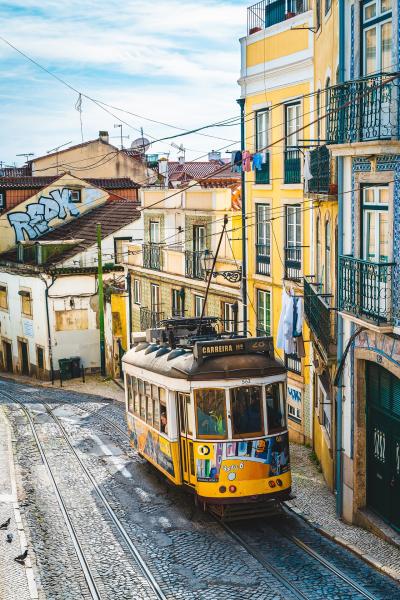
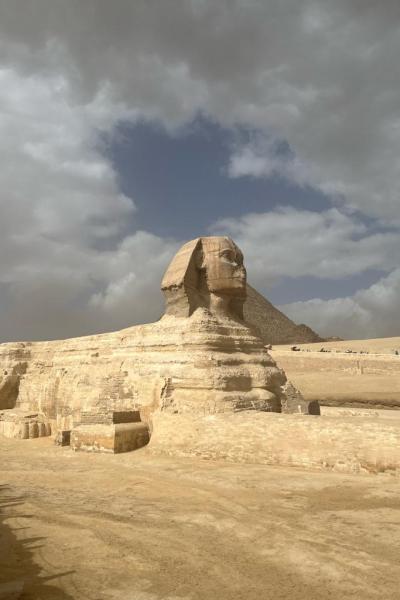
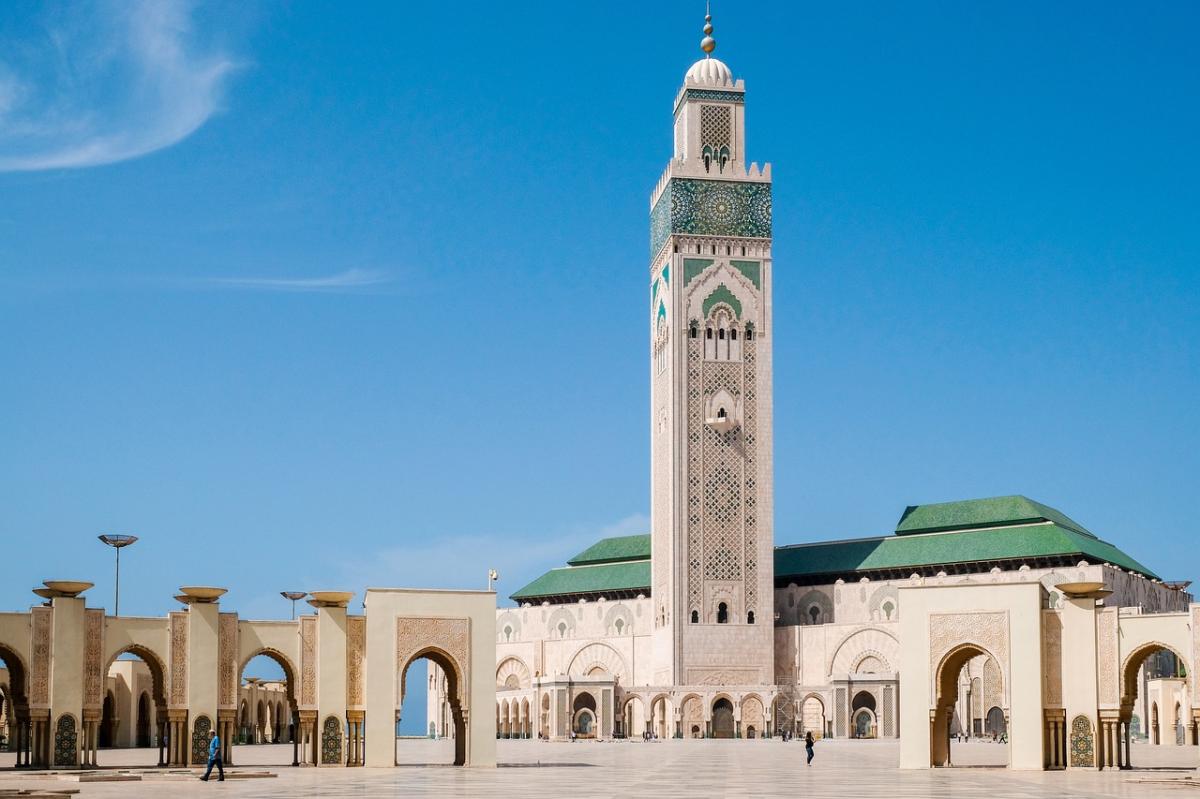
Morocco is a country that captivates the imagination of many travelers. It is a land of contrasts, where ancient and modern coexist, where mountains and deserts meet, where Arab and Berber cultures blend, and where Africa and Europe touch. Morocco is a place where you can experience the richness of history,...

Casablanca is one of the most exciting cities in Morocco. It is a vibrant, lively city with plenty to offer visitors and locals alike. Situated on Moroccos Atlantic coast, Casablanca offers a unique blend of old-world charm and modern convenience that makes it an exciting place to explore. As the largest...
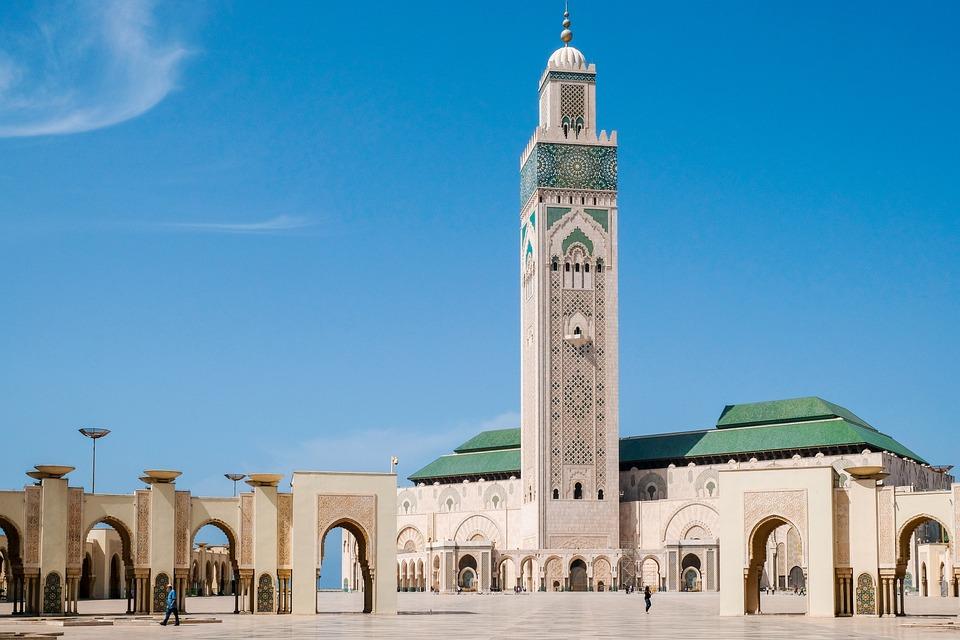
Morocco is a country located in North Africa that offers a rich cultural experience, magnificent landscapes, and an abundance of historic sites to explore. If you are planning a trip to Morocco, it is essential to research and plans accordingly to fully immerse yourself in the local culture and make...